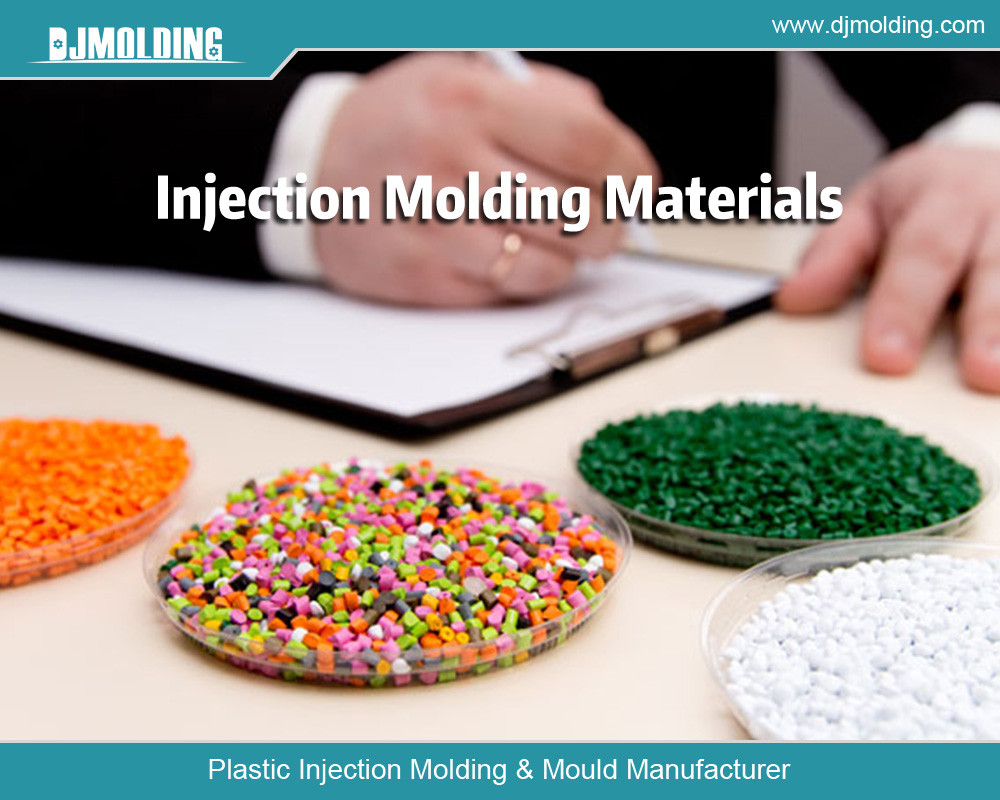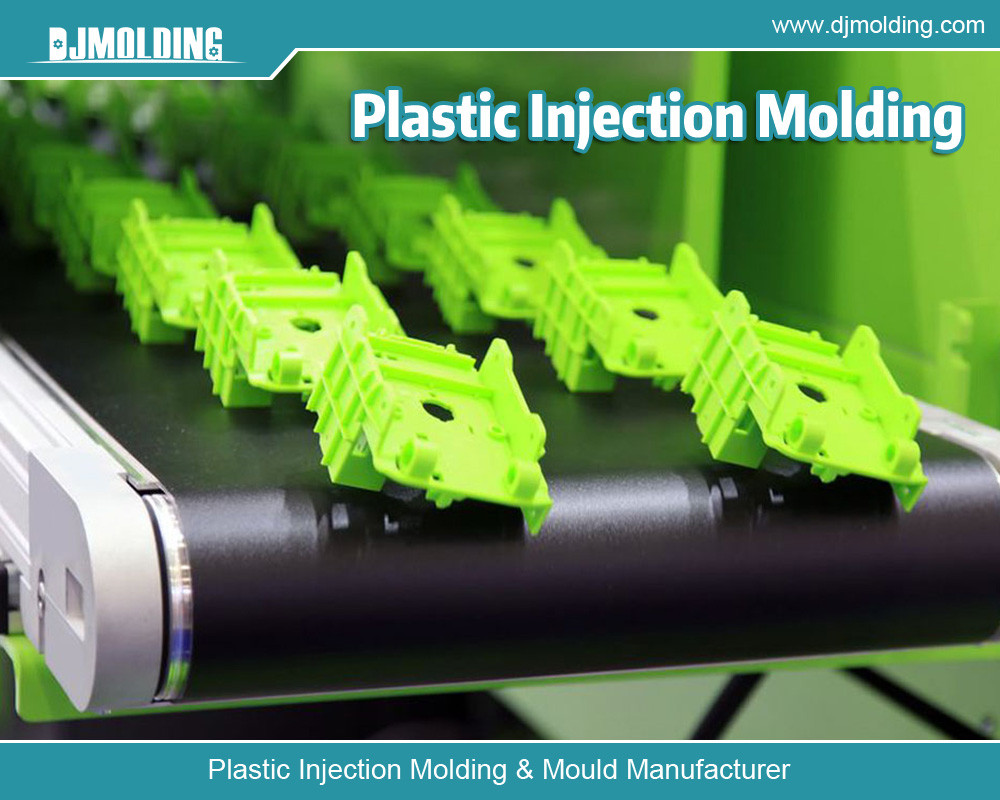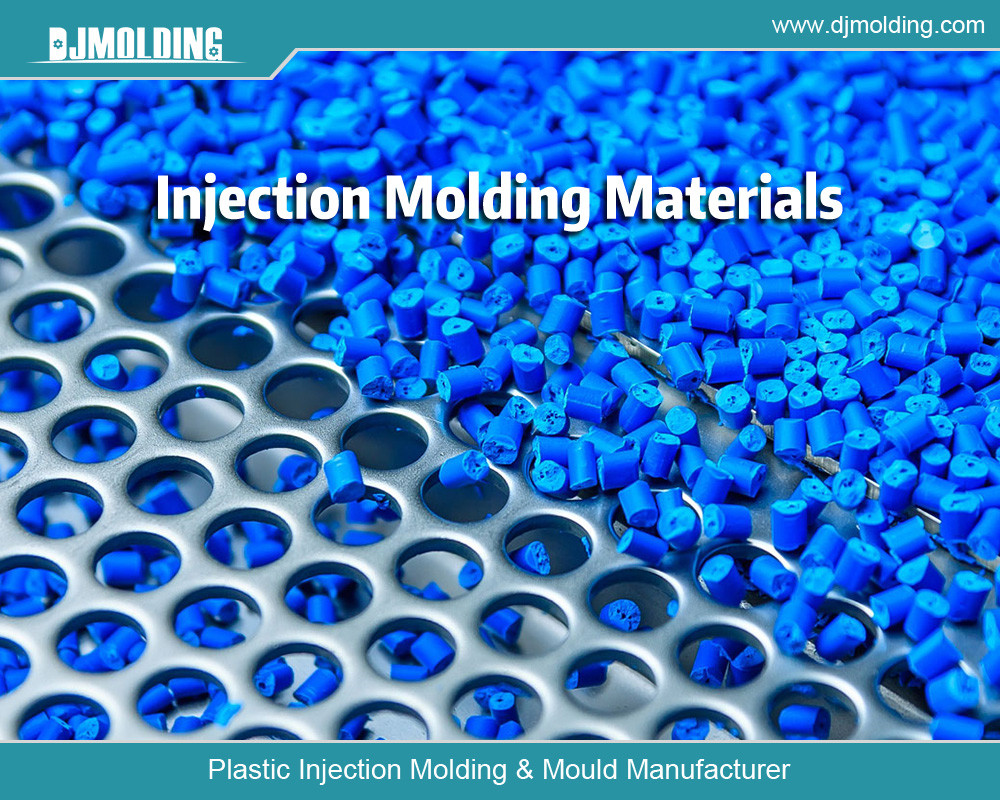A Simple Guide To Plastic Injection Molding Material Selection
A Simple Guide To Plastic Injection Molding Material Selection
Plastic injection molding is a manufacturing process that produces a wide range of parts and products. Choosing a suitable material for injection molding is crucial for ensuring product quality, performance, and cost-effectiveness. This guide provides an overview of the critical considerations and commonly used materials in plastic injection molding to help you make an informed decision.

Understanding Plastic Injection Molding
What is Plastic Injection Molding?
Plastic injection molding is a manufacturing process in which molten plastic is injected into a mold cavity. Once the plastic cools and solidifies, it shapes the mold. This highly versatile process produces everything from small components to large automotive parts.
Importance of Material Selection
The choice of injection molding material directly affects the final product’s mechanical properties, aesthetics, durability, and functionality. Selecting the appropriate material can enhance performance, reduce costs, and ensure the product meets specific industry standards.
Critical Considerations in Material Selection
Mechanical Properties
When selecting a material, consider its mechanical properties, such as tensile strength, impact resistance, and flexibility. These properties determine the material’s suitability for specific applications.
- Tensile Strength: Measures the material’s ability to withstand pulling forces.
- Impact Resistance: Indicates how well the material can absorb energy without breaking.
- Flexibility: Describes the material’s ability to bend without breaking.
Thermal Properties
The material’s thermal properties, such as melting temperature and heat deflection temperature, are critical for ensuring the material can withstand the molding process and the operating conditions of the final product.
- Melting Temperature: The temperature at which the material transitions from a solid to a liquid.
- Heat Deflection Temperature (HDT): The temperature at which the material begins to deform under a specified load.
Chemical Resistance
Chemical resistance is essential for products exposed to various chemicals during their lifecycle. The material should withstand exposure to oils, solvents, acids, and other chemicals without degrading.
Aesthetic Properties
The final product’s appearance, including color, gloss, and texture, is influenced by the chosen material. Some materials are more accessible to color or provide a smoother finish than others.
Cost
Material cost is a significant factor in the overall cost of the injection molding process. Balancing performance and cost-effectiveness is essential to ensure the product is affordable without compromising quality.
Environmental Considerations
With increasing emphasis on sustainability, consider the environmental impact of the material. Biodegradable plastics and recycled materials are becoming more popular as industries strive to reduce their ecological footprint.
Commonly Used Materials in Plastic Injection Molding
Polyethylene (PE)
Characteristics
Polyethylene is one of the most commonly used plastics due to its versatility and low cost. It is available in various densities, including low-density polyethylene (LDPE) and high-density polyethylene (HDPE).
- LDPE: Flexible, with good impact resistance, and used for applications like plastic bags and containers.
- HDPE: Stiffer and more durable, suitable for products like bottles, toys, and industrial containers.
Applications
Polyethylene is used in packaging, consumer goods, medical devices, and automotive parts due to its excellent chemical resistance and durability.
Polypropylene (PP)
Characteristics
Polypropylene is known for its high chemical resistance, toughness, and low cost. It is semi-crystalline and can be easily molded into complex shapes.
- Copolymer PP: More flexible and impact-resistant, used for automotive parts and packaging.
- Homopolymer PP: Higher stiffness, used for industrial applications and household goods.
Applications
Typical applications include automotive components, food containers, medical devices, and consumer products. Polypropylene is also famous for living hinges due to its excellent fatigue resistance.
Acrylonitrile Butadiene Styrene (ABS)
Characteristics
ABS is a thermoplastic polymer known for its toughness, impact resistance, and pleasing aesthetic properties. It is easy to mold and can be colored and finished in various ways.
Applications
ABS is widely used in automotive parts, consumer electronics, toys (e.g., LEGO bricks), and household appliances. Its good balance of properties makes it suitable for various applications requiring durability and pleasing appearance.
Polycarbonate (PC)
Characteristics
Polycarbonate is a high-performance plastic with excellent toughness, transparency, and heat resistance. It is more expensive than other common plastics but offers superior properties.
Applications
Polycarbonate is used in applications requiring high impact resistance and optical clarity, such as eyewear lenses, medical devices, automotive components, and electronic enclosures.
Nylon (Polyamide, PA)
Characteristics
Nylon is a strong, durable, and versatile material known for its excellent mechanical properties and resistance to wear and chemicals. It is available in various grades, including Nylon 6 and Nylon 6/6.
Applications
Nylon is used in automotive parts, industrial components, consumer goods, and textiles. Its high strength and durability make it suitable for applications requiring long-term performance.
Polyethylene Terephthalate (PET)
Characteristics
PET is a thermoplastic polymer known for its strength, transparency, and excellent barrier properties. It is widely used in packaging due to its mechanical and chemical properties.
Applications
Typical applications include beverage bottles, food containers, and packaging films. PET is also used in the textile industry to produce fibers.
Polyvinyl Chloride (PVC)
Characteristics
PVC is a versatile plastic that is available in rigid and flexible forms. It has good chemical resistance, durability, and flame-retardant properties.
- Rigid PVC: Used for pipes, construction materials, and automotive parts.
- Flexible PVC: Used for medical tubing, cables, and consumer goods.
Applications
PVC is used in construction, automotive, medical, and consumer products due to its versatility and durability. It is also famous for applications requiring fire resistance.
Advanced Materials and Additives
Glass-Filled Plastics
Glass-filled plastics are composites that include glass fibers to enhance mechanical properties such as strength and stiffness. Commonly used base polymers for glass-filled composites include polypropylene (PP), nylon (PA), and polycarbonate (PC).
Applications
These materials are used in applications requiring high strength and rigidity, such as automotive components, industrial machinery, and consumer electronics.
Flame Retardant Additives
Flame retardant additives are used to enhance the fire resistance of plastic materials. These additives, such as electrical housings, automotive interiors, and building materials, are crucial for applications where fire safety is a priority.
UV Stabilizers
UV stabilizers protect plastics from degradation due to exposure to ultraviolet (UV) light. These additives are essential for outdoor applications where prolonged UV exposure can lead to material breakdown.
Applications
UV stabilizers are used in outdoor furniture, automotive parts, and building materials to extend the lifespan and maintain the appearance of the products.
Biodegradable Plastics
Biodegradable plastics are designed to break down more quickly in the environment than traditional plastics. They are made from renewable resources and are gaining popularity in applications where environmental impact is a concern.
Applications
Typical applications include packaging, disposable items, and agricultural products. These materials help reduce the environmental footprint of plastic products.
Material Selection Process
Define Product Requirements
The first step in material selection is to define the product requirements, including mechanical properties, thermal properties, chemical resistance, and aesthetic criteria. Understanding the end-use environment and performance expectations is crucial.
Evaluate Material Options
Once the product requirements are defined, different material options based on their properties and cost will be evaluated. Consider trade-offs between performance and cost to find the most suitable material.
Prototype and Test
Prototyping and testing are essential to validate the chosen material. Create prototypes and conduct tests to ensure the material meets the desired specifications and performance standards.
Iterate and Optimize
Based on the test results, iterate and optimize the material selection if necessary. Fine-tuning the material choice can help achieve the best performance, cost, and manufacturability balance.

Conclusion
Selecting a suitable material for plastic injection molding is critical in product development. By considering the mechanical, thermal, and chemical properties, as well as cost and environmental factors, you can make an informed decision that ensures your product meets its performance requirements and is cost-effective. Understanding the characteristics and applications of commonly used materials like polyethylene, polypropylene, ABS, polycarbonate, nylon, PET, and PVC, along with advanced materials and additives, will guide you in making the best choice for your specific application. Through careful evaluation, prototyping, and testing, you can optimize the material selection process and achieve successful outcomes in your injection molding projects.
For more about a simple guide to plastic injection molding material selection,you can pay a visit to Djmolding at https://www.djmolding.com/5-common-plastic-resins-used-in-injection-molding/ for more info.




